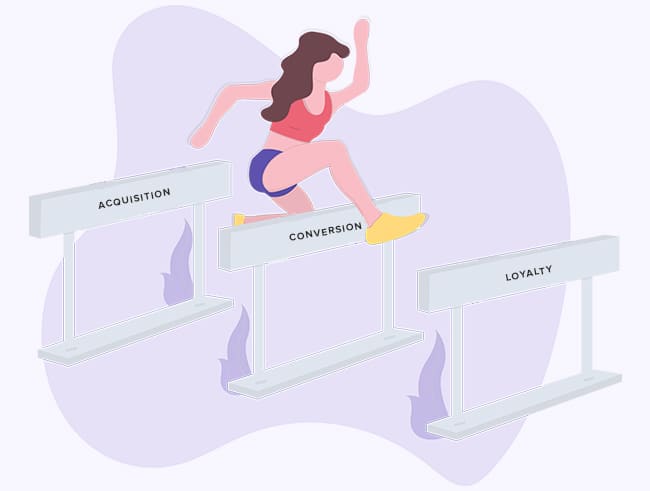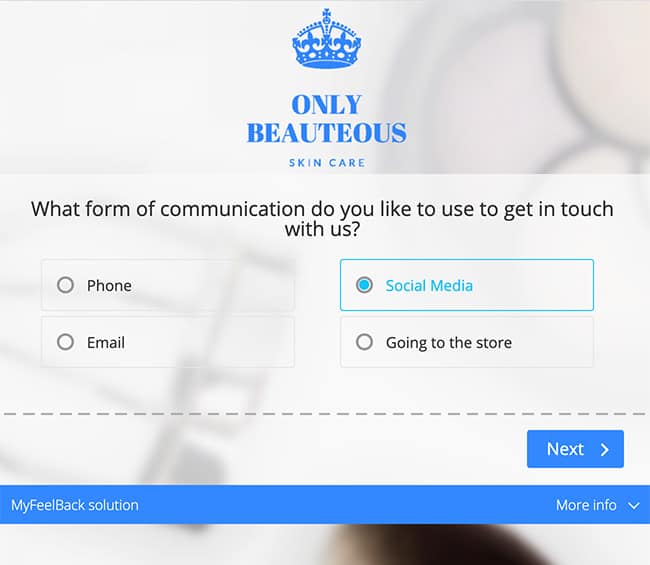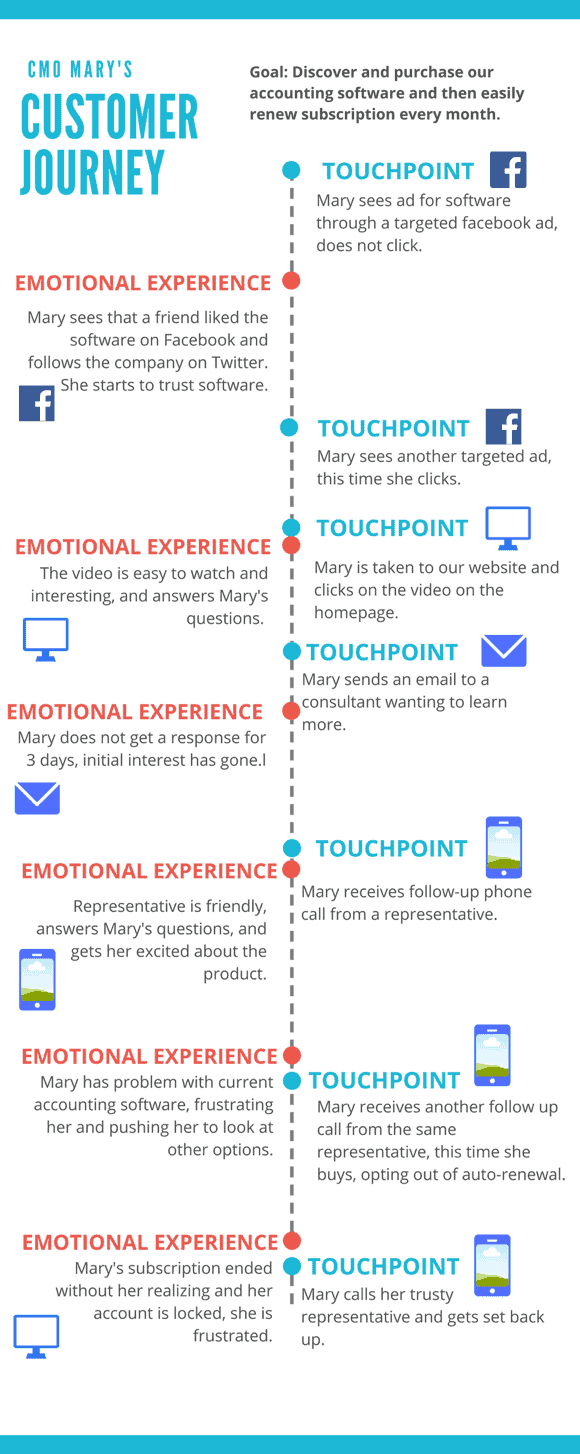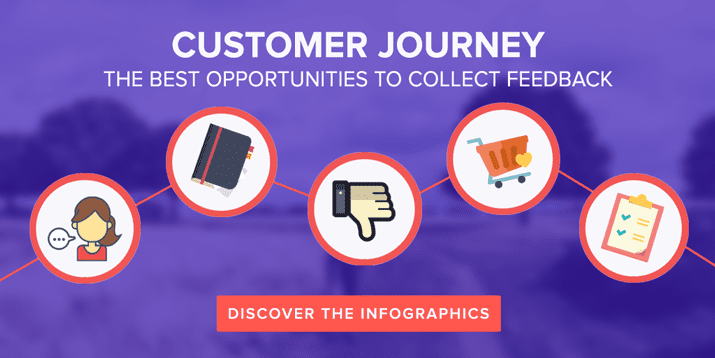One of the most important aspects of marketing is knowing your customers. This means two different things. First of all, it means knowing who they are as people: what they value, how they communicate, what their sense of humor is like, and what activities they enjoy. This allows you to be relatable and relevant when...
One of the most important aspects of marketing is knowing your customers.
This means two different things.
- First of all, it means knowing who they are as people: what they value, how they communicate, what their sense of humor is like, and what activities they enjoy. This allows you to be relatable and relevant when you market to them.
- Second of all, this means knowing who they are in relationship to your company: what channels of communication they use to get in touch with you, what products and/or services they like the best, what challenges they face when dealing with your company, and what problems they have in their life that your product/service solves for them. This type of knowing your customer allows you to better cater your product or service to their wants and needs, as well as to understand the larger, overall experience of “being a customer”.
Discover 15+ questions to ask your customers to know their needs and expectations
For the second type of knowing your customer, many marketing departments look to “Customer Journey Mapping” as a way to solidify their customer’s journey with their company on paper.

A customer journey map is useful because it allows you to visualize the different moments in your customer’s experience where they will interact with your company, as well allowing you to see when they interact, how they interact, and most importantly, why they interact. Once you have all of this information in the form of a map, you can see where any “missed connections” are with your customer, or places where you can benefit from interacting with them that you are currently missing. You can also see if the journey is easy, makes sense, and is enjoyable for the customer. If it is, you can develop new technologies to make it even better. If it’s not, you can brainstorm solutions to get your journey on track.
All in all, customer journey mapping allows you to take a walk in your customer’s shoes so that you can really understand what it feels like to be a customer at your company. This provides invaluable insight and can help marketing departments catch mistakes in places they would never think to look otherwise. If you think that customer journey mapping is a possible tool for your marketing department’s arsenal, read on for a step by step guide on how to create one.
1 – Narrow your focus
Before you begin creating your customer journey map, you need to narrow things down a bit. Unless you are a very small company with one specific buyer persona, you are probably going to make at least two maps in order to understand the journey of each type of customer. Start by picking a specific buyer persona for your customer journey map, and also decide what kind of journey you are looking to map out.

Buyer persona example
Most customer journey maps tackle both online and offline interactions, but if your customers are strictly divided into online and offline customers, such as a grocery store that has a physical location in New York for it’s “offline” customers, but also has a large online shopping following for national customers, you might want to make a separate online and offline map. Once you decide which structure works for you, and which persona you want to focus on, it’s time for step 2.
Discover here 5 Reasons to Use Personas in your Marketing!
2 – Put yourself in the place of your customer
The job of the customer journey map is to allow you to put yourself in your customer’s shoes, but this needs to happen a little bit ahead of time as well so that you can understand what you are mapping in the first place. Every map needs a destination, and your destination is going to be whatever your customer’s main goal(s) are. The best way to know what these goals are is to ask your customers through the form of surveys. Sending out a survey prior to starting your customer journey map will help you to get insight into what goals your customers have and give you guidance for your map. Below are some questions you should include in this pre-map survey:
- Which one of these reasons best reflects your most common reason for interacting with us?
- Buying a product easily and quickly
- Talking to an expert about a problem
- Getting information on your hours
- Accessing my account
- Shipping problems
- What form of communication do you like to use to get in touch with us?
- Phone
- Social Media
- Going to the store
- How many times do you typically get in touch with us before buying a product?
- 1
- 2-3
- 4-5
- More than 5

Keep in mind that although this step is great for helping you to understand your customer’s goals, a customer journey map can still include your goals as a company as well. Finding ways to balance reaching your customers goals without sacrificing yours is one of the benefits of customer journey mapping.
3 – Use your data to create a map
Once you have all the data you can get on this specific buyer persona (use your pre-map survey answers as well as any data you have collected on this customer in the past) it’s time to take a stab at creating a map.
Use all the data you have in your CRM, as well as customer service stats like these. Source.
There is no set format to creating a customer journey map, but the most important things to include are all of the touchpoints with your company, and all of the channels that your customer uses to get in touch with you. An example of a beginner’s customer journey map may look like this:

Notice that the map includes all of the different touchpoints that the persona has with the company as well as an icon representing what media channel was used to get in contact. This particular map also has a place for “emotional experiences” that map how the persona is feeling throughout the journey, as well as any important events that occurred that were not specific interactions with the company (ex: her current software system failing.) Emotion is an important thing to consider when plotting a customer journey map, because it guides most of your customer’s choices.
4 – Analyze your findings
The last and most important step to creating a customer journey map would be to analyze the findings after you have created your map.
- In the above example, a marketing department might conclude that Mary’s journey began with social media exposure and transitioned over to direct phone conversations.
- They could also conclude that Mary’s experience with email communication was not satisfactory, which is what pushed her into being a “strictly phone” customer. They could try to improve their email efforts to minimize the amount of customers like Mary who insist on taking on the phone.
- They could also deduce that Mary was not committed enough to the product in the beginning to commit to auto-renewal, causing later problems.
- Lastly, they could conclude that their social media targeting and engagement efforts are working well, but that their retention and conversion efforts need improvement. As this map shows, there is more to a successful customer journey than just converting a customer one time.
All of these things will help a marketing team identify weak points in the journey and make it a more enjoyable experience overall.
Customer journey mapping is a tool that every marketing department can use to better understand their customer, whether you are an online software company or a brick and mortar grocery store.
Taking the time to understand your customer in concrete ways will pay off by creating a better customer experience where purchasing your product/service feels effortless.








